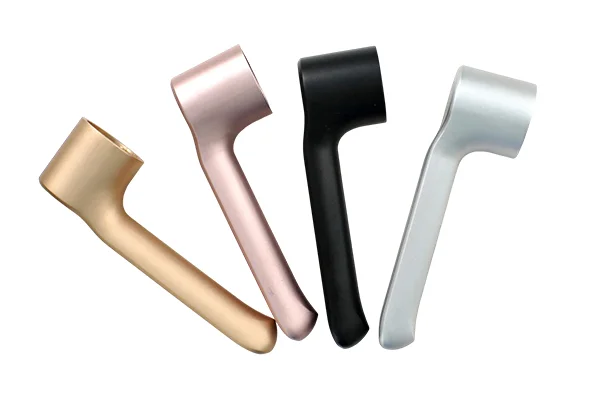In today’s competitive manufacturing landscape, the choice of material plays a crucial role in determining product performance, aesthetics, and overall value. Among the wide range of materials available, Aoke aluminum alloy die-casting appearance parts stand out for their exceptional balance of strength, weight, durability, and design flexibility. From automotive components to consumer electronics casings, aluminum alloy die-casting delivers both functional and visual benefits that are difficult to match with other materials such as steel, zinc, or plastic.

1. Lightweight with High Strength-to-Weight Ratio
One of the most notable advantages of aluminum alloys is their excellent strength-to-weight ratio. Compared to steel, aluminum alloys can achieve similar or even better strength while being significantly lighter. This property offers multiple benefits:
-
Reduced overall product weight: This is especially important in industries like automotive, aerospace, and electronics, where lightweight designs contribute to improved energy efficiency and user comfort.
-
Improved portability: Products made with aluminum alloy die-casting are easier to transport, install, and handle.
-
Enhanced performance in moving parts: Reduced mass helps improve mechanical efficiency and lowers operational energy consumption.
This combination of strength and lightness makes aluminum alloy die-casting ideal for parts that require both structural integrity and weight reduction.
2. Excellent Corrosion Resistance
When properly surface-treated, aluminum alloy die-casting appearance parts offer exceptional corrosion resistance, allowing them to perform reliably in various environments. Common surface treatments include anodizing, powder coating, and painting, each enhancing the material’s ability to resist oxidation and environmental damage.
-
Long-lasting durability: Ideal for outdoor applications and products exposed to moisture or harsh conditions.
-
Minimal maintenance: Resistant to rust and degradation, reducing the need for frequent replacements.
-
Improved product lifespan: Ensures the part retains its structural and visual integrity over time.
Compared to untreated steel, which is prone to rust, aluminum alloy is far more suited to long-term use in challenging conditions.
3. Superior Thermal Conductivity
Aluminum alloy die-casting appearance parts excel in applications requiring effective heat dissipation due to their high thermal conductivity. This makes them particularly valuable in industries like electronics, lighting, and automotive.
-
Efficient heat transfer: Helps prevent overheating in sensitive components.
-
Enhanced performance and safety: Maintains optimal operating temperatures for electronic devices.
-
Design flexibility for heat management: Enables integration of cooling fins and other thermal features directly into the casting.
This property gives aluminum alloys a clear edge over materials like plastic, which are poor conductors of heat and unsuitable for high-temperature environments.
4. Design Versatility and Aesthetic Appeal
Beyond functional advantages, aluminum alloy die-casting also offers excellent aesthetic qualities. The die-casting process allows for complex shapes, precise detailing, and smooth surface finishes, reducing or even eliminating the need for post-processing. This makes them perfect for appearance parts where visual quality is just as important as performance.
-
Customizable surface finishes: Polishing, anodizing, painting, and powder coating for varied design needs.
-
Complex shapes and fine details: Supports modern product design trends without sacrificing strength.
-
Premium visual quality: Ideal for high-end consumer goods and branded products.
5. Comparison with Other Materials
When compared to other common materials used for appearance parts, aluminum alloy die-casting demonstrates clear advantages:
-
Steel: Strong but heavy, prone to corrosion without protective coating.
-
Zinc: Good for die-casting but heavier and less corrosion-resistant than aluminum.
-
Plastics: Lightweight and corrosion-free but lack the structural strength and thermal conductivity of aluminum alloys.
In many cases, aluminum alloys offer the best balance between mechanical performance, weight, durability, and visual appeal.
6. Applications Across Industries
Thanks to their unique combination of properties, aluminum alloy die-casting appearance parts are widely used in:
-
Automotive: Body panels, trim, and lightweight structural components.
-
Electronics: Device housings, heat sinks, and decorative frames.
-
Lighting: LED lamp housings with integrated cooling designs.
-
Aerospace: Lightweight yet strong components for aircraft interiors.
-
Consumer Goods: Premium appliance casings, sports equipment, and furniture hardware.
In conclusion, Aluminum Alloy Die-casting Appearance Parts offer unmatched advantages over other materials, combining lightweight strength, corrosion resistance, excellent thermal conductivity, and aesthetic flexibility. Whether you’re designing for industrial, automotive, or consumer applications, aluminum alloy die-casting provides a solution that enhances both performance and visual appeal. By choosing this material, manufacturers can achieve products that are durable, efficient, and visually striking—an investment that pays off in both quality and long-term value.












Comments (0)